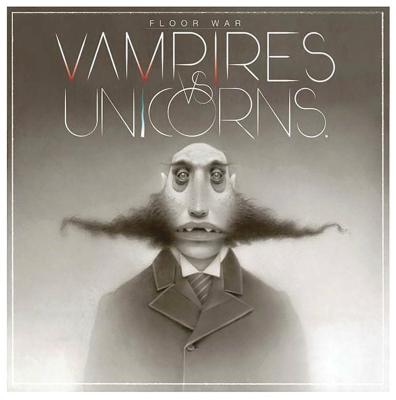Real Vampires
Vampires have held the fascination of the public for hundreds of years. Many point to Bram Stoker's Dracula as the source of this fascination, but vampire obsession has
existed for much longer.
Like all legends, the vampire has evolved throughout history. Vampires exist in many different cultures under many different names. In ancient times, the word vampire did not exist.
Gods, demons, and evil spirits were often associated with drinking blood or eating human flesh.
Ancient Times (Pre 500 AD)
The Egyptian goddess Sekhmet is one of the earliest known accounts of vampirism. When Ra became angry because mankind was not following his laws he sent Sekhmet as punishment. She
was called the Lady of the Bloodbath. She would slaughter humans, rip their bodies apart, and drink their blood. Sekhmet can be traced to at least 3000 BCE. She is one of the
earliest known versions of the modern day vampire. The Feast of Sekhmet was held each year in Egypt. Ancient Egyptians would drink beer mixed with pomegranate juice. Beer turned red,
beer that symbolized blood.
Around the same time in nearby Mesopotamia, there were numerous blood-drinking demons. The Persians may have been the first to tell tales of these demons. Excavated Persian pottery shards
contain images of demons attempting to drink human blood. Estries was a female demon who was a shape shifter. She appeared to men as a beautiful woman. She would seduce them and then drink
their blood. In Babylon, Lilitu was the Temptation Demon. She appeared as a seductive woman who drank the blood of men.
Lilitu led to the Hebrew myth of Lilith. There are numerous contradictory stories of Lilith. In some, Lilith is Adam's first wife. In others Lilith is a demon of the night that lives by
drinking the blood of babies.
In Ancient Greece there was Empusa. She was a blood-drinking demon who transformed into a young woman and seduced men. Lamia, daughter of Poseidon, was one of Zeus's many human lovers.
When Hera found out, she killed all of Lamia's children. Lamia swore vengeance and began preying upon young children in their beds at night, drinking their blood.
The most common theme in ancient times was a demon that shape shifted into a beautiful woman. The demon seduced and preyed upon men, drinking their blood.
In 130 BCE the Silk Road opened and connected the Egyptian port of Alexandria to southern Europe and eastern Asia. The Silk Road is credited with intermixing cultural beliefs throughout
Africa, Europe, and Asia. Egyptian mythology was particularly inspiring as it introduced the concepts of eternal life after death, reincarnation, and numerous deities. Legends, folklore,
and tales spread across the continents.
Medieval Times (500 AD to 1500 AD)
In Hungary, belief in vampires has persisted since at least 800 AD. The demon Izcacus was a blood-drinking demon. The word has roots in ancient Turkish. The Hungarians and Turks made contact
along the Silk Road in the late 8th century. The Turks introduced the Hungarians to these early vampires, who were in turn most likely descendents of the Mesopotamian vampires. Later, in the
12th century, a pagan shaman was on trial in the city of Saeospatak. The shaman again tells of Izcacus and issues a warning. Izcacus would be called upon to destroy the Hungarians (who were
now Christian).
The upir (upyr, upior, upier, upyri, upor, and numerous other variants) has Russian, Ukrainian, and Slavic origins. In 1047 AD a manuscript of the Book of Psalms is transcribed by a priest
from Glagolitic into Cyrillic for the Russian Prince Vladmiri Yaroslavovich. In a colophon, the priest writes his name as is Upir' Likhyi, which means Wicked Vampire.
Across Slavic culture, the upir is traditionally an unclean spirit that possesses a dead body. This undead creature requires the blood of the living to survive. The upir is jealous and
vengeful toward the living. To kill an upir you must stake it in its heart, burn it by fire, drown it in holy water, or decapitate it.
Vlad III Dracula, ruler of Walachia (modern-day Romania) lived 1431 - 1476. He was the son of Vlad II Dracul. Locally he was considered a hero. He was charged with protecting Christianity in
Eastern Europe. He led raids against the invading Ottomans and protected the Romanians and the Bulgarians. He gained additional notoriety for the unusually cruel and brutal punishment of his
Ottoman enemies. Although there are no convincing historical accounts of Vlad drinking blood, he would later become the inspiration for Bram Stoker's Dracula.
Modern Times (1500 AD to Today)
Elizabeth Bathory (Hungarian, 1560 - 1614) was born in Transylvania. She was a countess and a serial killer. She tortured and killed hundreds of young women between 1585 and 1609. Her victim
count may have been as high as 650. To retain her youth, she bathed in the blood of her victims, young virgin girls. She would later become known as the Blood Countess.
Greek folklore tells of the vrykolakas. A person became a vrykolakas when they led a sacrilegious way of life, suffered excommunication, or were buried in unconsecrated ground. After death
they would rise from their grave and their bodies did not decay. They would roam the village at night and cause all kinds of havoc. Then, each night before dawn, they would return to their
grave to rest. In 1645 Leo Allatios, a Greek catholic, wrote a letter to his friend about the vrykolakas. It was titled De quorundam Graecorum Opinationibus.
In 1656 in the region of Istria (modern-day Croatia), Jure Grando died. For at least 16 years after his death, each night Jure rose from his grave. He terrorized the village, his former family,
and drank human blood. Eventually the town revolted and went to his grave and performed an exorcism. Jure was decapitated and the town never saw him again.
In 1748 the word vampyre appears in the poem, Der Vampir by Heinrich August Ossenfelder. This is considered to be the first introduction of the word vampire into the English language.
In 1897 Bram Stoker publishes Dracula.
Fictional and real vampires have appeared in mythology, folklore, and our writings for thousands of years.
The Vampire in Literature
Numerous vampire stories were written prior to the popularization of the vampire myth in pop culture.
The Vampyre; a Tale by John Polidori (1819)
A short story that exploited the gothic horror predilections of the public of the period. It was originally mis-published
under the authorship of Lord Byron (Polidori was Lord Byron's personal physician). The tale accounts the exploits of Lord Ruthven,
a British nobleman and vampire. Lord Ruthven bore more than a passing resemblance to Lord Byron and became a highly influential
model for the Byronic vampires of literature.
Varney The Vampire by James Malcolm Rymer (1845-47)
A Victorian-era gothic horror story which first appeared in a series of pamphlets between 1845 and 1847. Inexpensive and
gruesome, the collective work was published in book form in 1847. The tale runs 868 pages and is divided into 220 chapters. The story
revolves around the persecution of the Bannerworth family by Sir Francis Varney, a vampire who in the early chapters enters
the bedroom of the daughter of the house (Flora) and sucks her blood.
Carmilla by J. Sheridan Le Fanu (1872)
A compelling gothic novel of a lesbian vampire, set in darkest central Europe. It tells the story of a young woman's susceptibility
to the attentions of a female vampire named Carmilla. The story was to greatly influence Bram Stoker in the writing of Dracula.
It also served as the basis for several films, including Hammer's The Vampire Lovers (1970), Roger Vadim's Blood and Roses (1960),
and Danish director Carl Theodor Dreyer's Vampyr (1932).
Dracula by Bram Stoker (1897)
The most well known vampire story, the novel is mainly composed of journal entries, letters, and newspaper clippings. It has
been suggested that the story was based on Vlad Tepes, a medieval figure of extraordinary bloodthirst. History records that Vlad Tepes
impaled his enemies and cut off their heads. He ruled Walachia as Vlad III during the 15th century (modern day Romania) and signed
his letters as Vlad Dracula. Dracula translates into "son of the devil".
|







